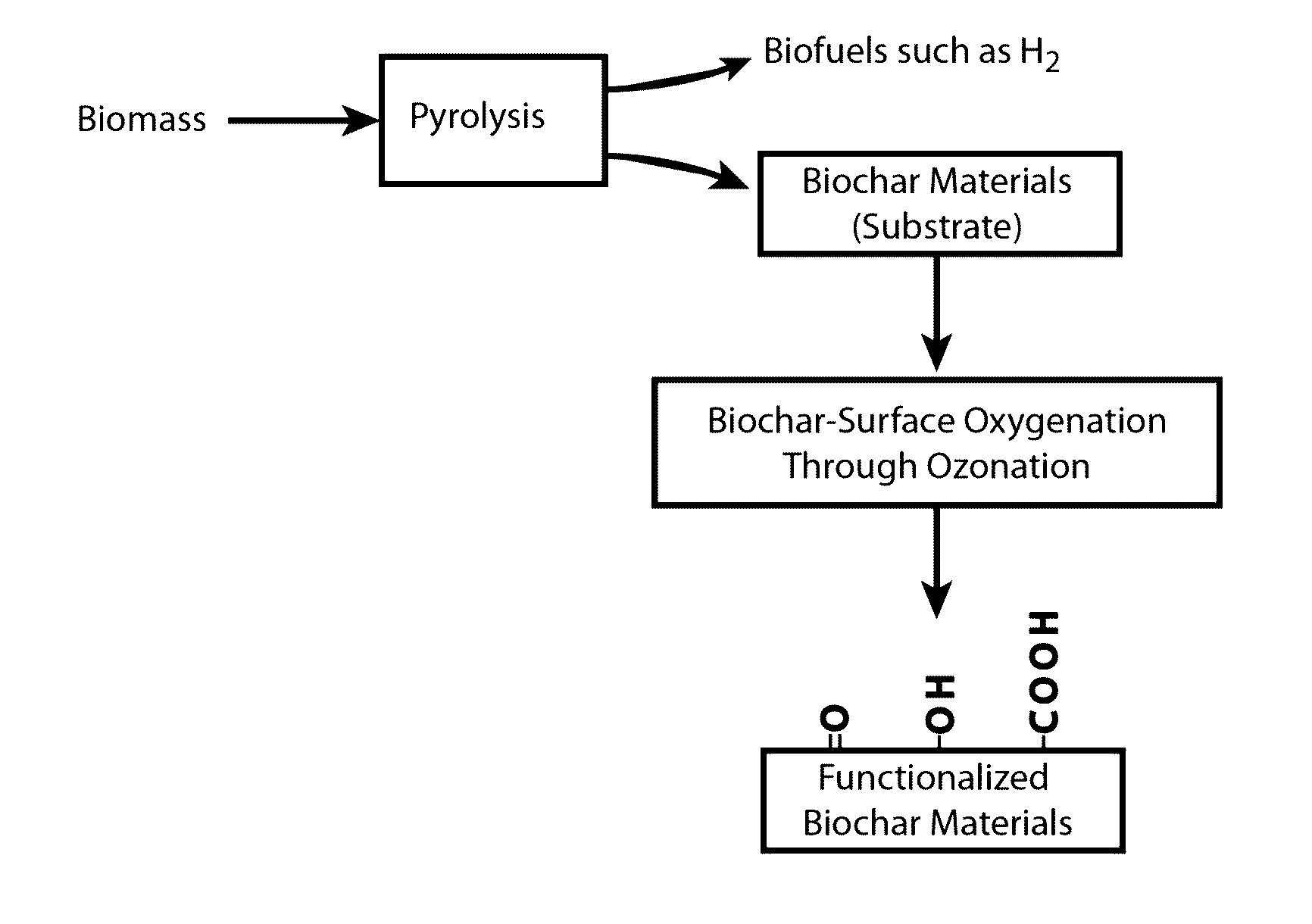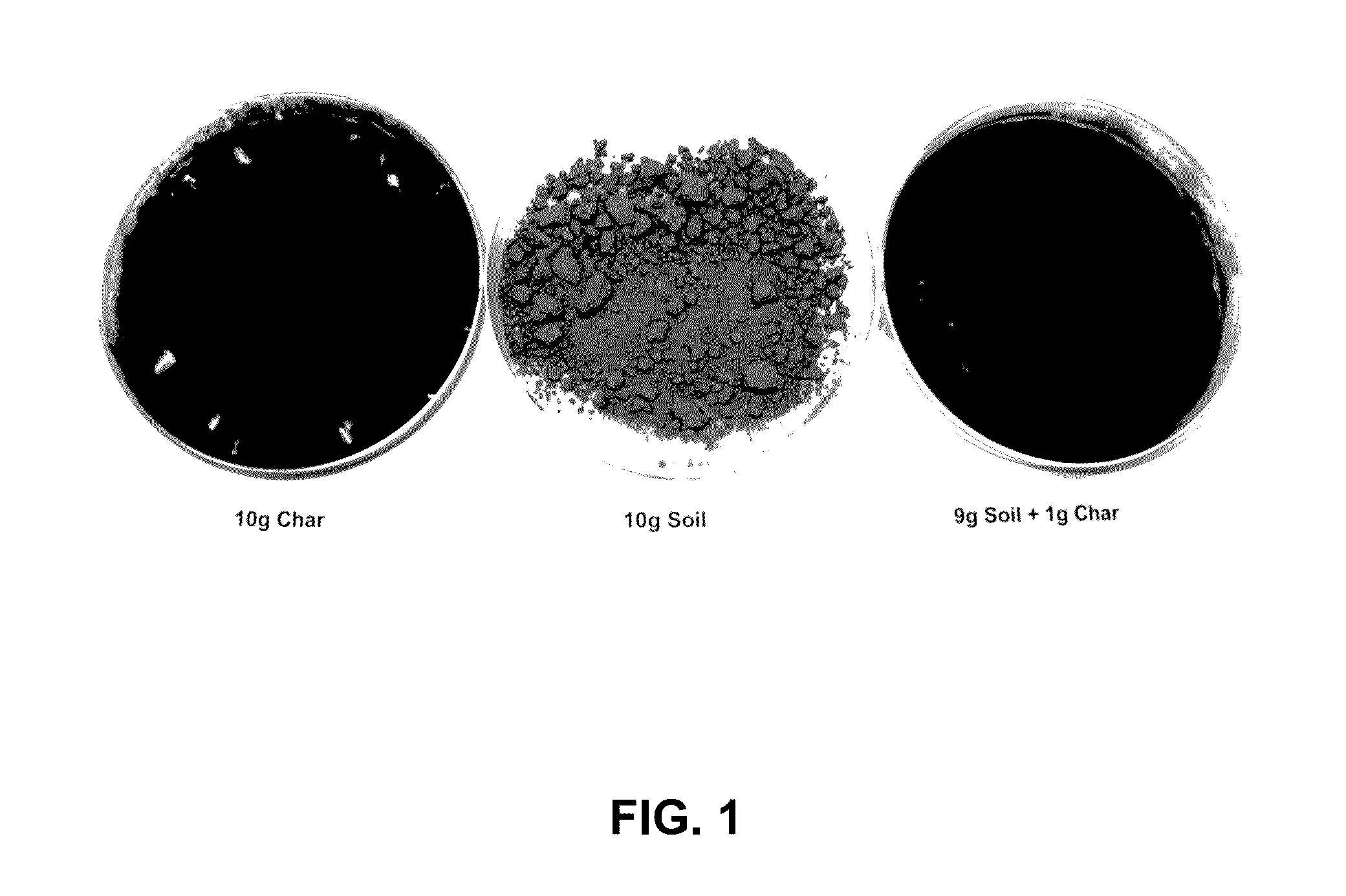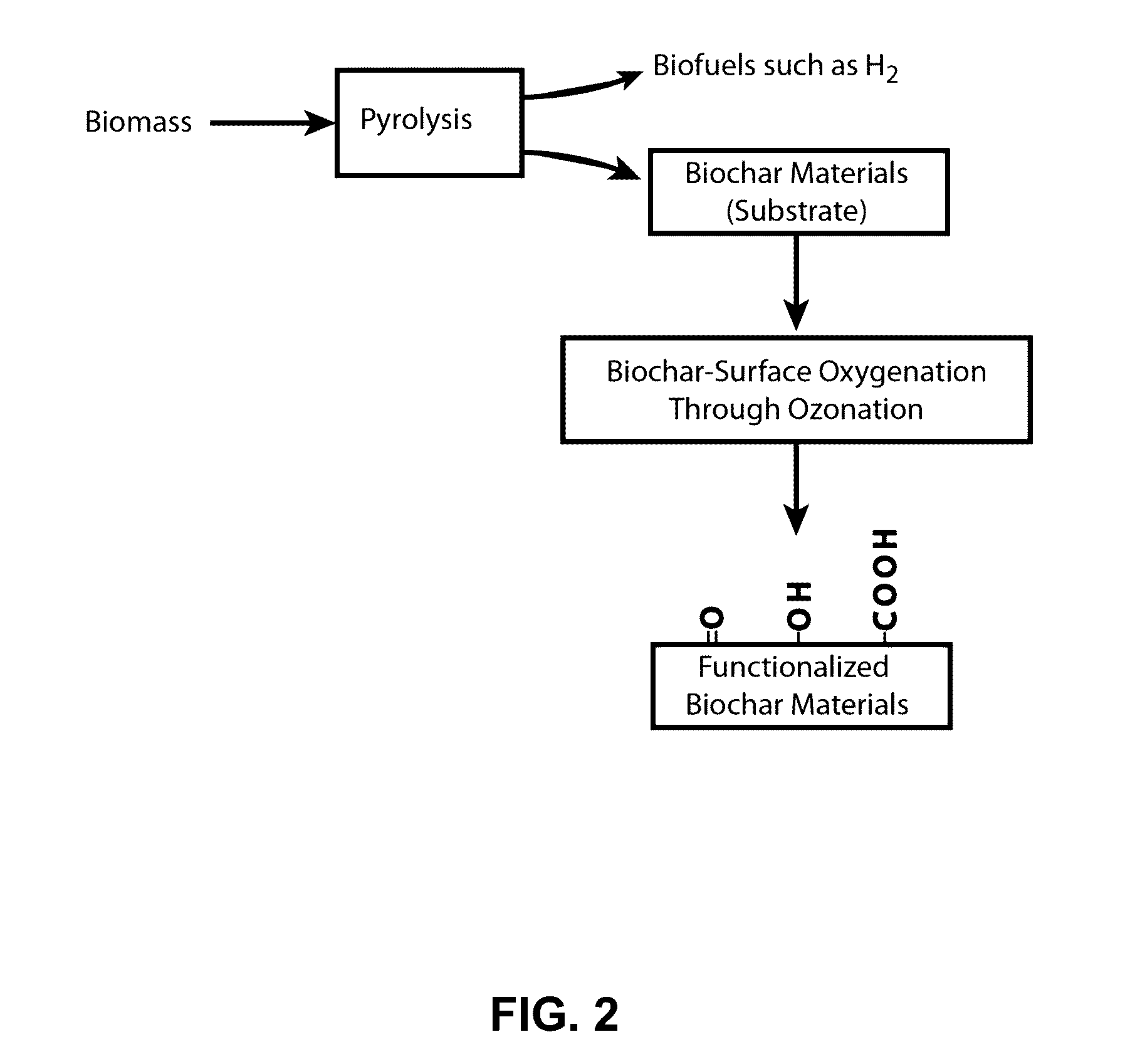Ozonized biochar compositions and methods of making and using the same
- Summary
- Abstract
- Description
- Claims
- Application Information
AI Technical Summary
Benefits of technology
Problems solved by technology
Method used
Image
Examples
example 1
Ozone Treatment Reducing Biochar pH
[0108]Table 1 shows the changed in pH of the biochar samples brought about by treatment with ozone. Overall there is a dramatic decrease in the pH of the biochar samples from untreated at 7.30±0.39 to the sample treated with 90 minutes of ozone at 5.28±0.33. This sharp decrease in pH results from, for example, the addition of acidic functional groups, primarily carboxyl groups on the surface of the biochar. The trend of the drop in pH illustrates a relationship between treatment time and increasing acidity of the biochar samples. This drop in pH is an important characteristic when considering using biochar as a soil amendment. Therefore, exemplary embodiments for ozone treatment of biochar can be used to adjust or to “tune” biochar pH to a desired value for a given soil.
TABLE 1Summary data for pH, CEC, and Methylene blue adsorption.CECMethylene BlueSamplepHmmol / kgAdsorption mg / gUntreated7.30 ± 0.39153.9 ± 15.91.79 ± 0.1830 Min O35.46 ± 0.40302.6 ± ...
example 2
Ozone Treatment Enhancing Biochar Cation Exchange Capacity by a Factor of More than 2 Times
[0109]Table 1 also illustrates a significant increase in the measured CEC values of biochar processed in accordance with exemplary embodiments of the ozone treatment. The untreated biochar sample had a CEC of 153.9±15.9, and the sample treated with 90 minutes of ozone had a value of 326.9±25.1 (in units of mmol / kg biochar). In the illustrated example, there is only a small difference between the 30, 60, and 90 minute ozone treated samples, which is potentially due to a saturation of the sites available for alteration by ozone treatment. The increase in CEC is due to an increase in oxygen functionality, as discussed, for example, in Lee et al., Environ. Sci. Technol. 44:7970-7974 (2010) and Matthew et al., Journal of Environmental Management, 146:303-308(2014). Specifically, cation exchange capacity correlates to the availably of oxygen function groups, predominately carboxylic acid groups whic...
example 3
Ozone Treatment Improving Biochar Methylene Blue Adsorption Capability by a Factor of More than 5 Times
[0110]Methylene blue adsorption capacity was measured to evaluate the viability of the biochar for dye-contaminant removal in water systems. As shown in Table 1, there is a dramatic increase in methylene blue removal capacity resulting from ozone treatment, with the untreated biochar sample only removing 1.79±0.18 mg dye / kg biochar while the 90 minute ozone treated sample removed 9.35±0.04. This significant increase shows the usefulness of ozone treatment when considering biochar amendment for use in contaminated water systems. It is believed that the increase in methylene blue adsorption capacity results from the increase of oxygen functionality on the surface of the biochar, which makes the biochar overall more negatively charged. Methylene blue is natively positive in solution, and therefore is more electrostatically attracted to biochar that has been treated with ozone.
PUM
| Property | Measurement | Unit |
|---|---|---|
| Fraction | aaaaa | aaaaa |
| Mass | aaaaa | aaaaa |
| Cation exchange capacity (mol) | aaaaa | aaaaa |
Abstract
Description
Claims
Application Information
 Login to View More
Login to View More - R&D
- Intellectual Property
- Life Sciences
- Materials
- Tech Scout
- Unparalleled Data Quality
- Higher Quality Content
- 60% Fewer Hallucinations
Browse by: Latest US Patents, China's latest patents, Technical Efficacy Thesaurus, Application Domain, Technology Topic, Popular Technical Reports.
© 2025 PatSnap. All rights reserved.Legal|Privacy policy|Modern Slavery Act Transparency Statement|Sitemap|About US| Contact US: help@patsnap.com



